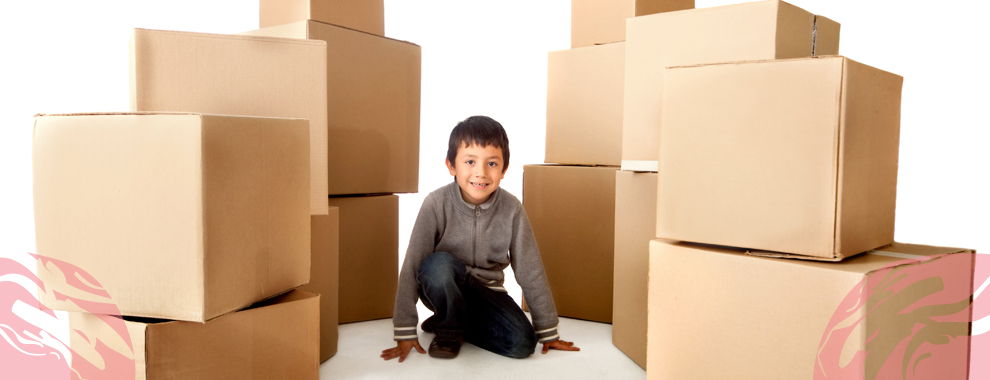Smart Moves: Taking Your Bed and Mattress with Ease
Posted on 29/05/2025
Smart Moves: Taking Your Bed and Mattress with Ease
Moving homes can be stressful, but with the right planning, transferring your bed and mattress doesn't have to be. Discover smart solutions, essential tips, and foolproof techniques to take your bed and mattress with ease, safeguarding your investment and sleep quality.
Why Smart Bed and Mattress Moving Matters
When orchestrating a household move, many people underestimate the complexity of transporting their bed and mattress. These aren't just bulky items--they are crucial for your well-being. A damaged mattress or bed frame can compromise your comfort, hygiene, and even your quality of sleep. Employing smart strategies to move your bed and mattress can prevent unnecessary headaches, extra expenses, and the need to replace these valuable items prematurely.
Understanding the Challenges of Moving Beds and Mattresses
Before you start, it's important to acknowledge the unique challenges involved in moving these items:
- Size and Weight: Mattresses and beds can be large, heavy, and awkward to maneuver, especially through narrow hallways or staircases.
- Flexibility: Some mattress types, like memory foam, are flexible but can be easily damaged if folded improperly.
- Protection Requirements: Both mattresses and bed frames require proper wrapping to prevent damage, stains, or exposure to moisture and dust.
- Disassembly: Most bed frames must be disassembled, which involves managing hardware and remembering how to reassemble them correctly.
- Transport: Ensuring your mattress and bed frame fit safely in your moving vehicle is crucial to avoid structural damage.

Essential Tools and Supplies for Smart Bed and Mattress Moving
To ensure a smooth process and avoid costly mistakes, gather the following items before moving day:
- Mattress Bag or Cover: Protects against moisture, dust, and dirt. Available in various sizes for different mattress types.
- Stretch Wrap: Secures smaller bedding components and helps bind wrapped items.
- Furniture Pads or Blankets: Additional protection for the bed frame and mattress during transit.
- Tool Kit: Includes screwdriver, Allen wrenches, pliers, and a hammer--essentials for disassembling and reassembling your bed frame.
- Labeling Supplies: Zip-lock bags for hardware and markers to label parts make reassembly easier.
- Moving Straps and Dollies: Useful for lifting and transporting heavy or large items safely without injury.
- Tape: Secure mattress bags and bundle bed frame components together.
Step-by-Step Guide: Moving Your Bed and Mattress with Ease
1. Plan the Move
- Measure Everything: Check the dimensions of both your bed and mattress, along with doorways, hallways, elevators, and stairwells.
- Pathway Preparation: Remove obstacles in your moving path, protecting walls and floors where appropriate.
- Schedule Transportation: Reserve a moving truck or coordinate with your moving company. Ensure the vehicle can accommodate your bed and mattress without folding or excessive force.
2. Strip and Clean Bedding
- Remove Sheets, Blankets, and Pillows: Box up your bedding separately to prevent damage and for easier handling.
- Clean the Mattress: Vacuum and spot-clean your mattress; this is an ideal time to freshen it for your new home.
3. Disassemble the Bed Frame
- Take Pictures: Document how the frame is assembled--it will be invaluable during reassembly.
- Remove Slats and Support Bars: Store any loose parts in labeled bags.
- Lose as Little Hardware as Possible: Place all screws, nuts, and bolts in a small, well-labeled bag to tape onto the bed frame or store securely.
- Wrap Bed Components: Use moving blankets or stretch wrap to protect headboards, side rails, and footboards.
4. Prepare the Mattress for Moving
- Encase in a Mattress Bag: This is the single best way to protect the mattress from dirt, rain, and tears.
- Seal Thoroughly: Use strong tape to reinforce any openings in the mattress bag if needed.
- Keep Upright: Transport the mattress standing on its side whenever possible, as this helps prevent damage to internal springs and materials.
5. Safe Loading and Transport
- Use a Dolly or Straps: These make maneuvering bulky mattresses and heavy bed frames easier and safer, especially up or down stairs.
- Secure in Vehicle: Place the mattress upright along a side wall, securing it with straps. Keep flat, larger bed components on the truck floor, cushioned by blankets.
- Never Bend or Fold a Traditional Mattress: This can cause permanent damage. Only roll-up mattresses (such as certain foam models) should be handled this way, if specified by the manufacturer.
6. Reassembly at the New Home
- Follow Photo Guides: Reference your pre-move photos to reassemble the bed frame accurately.
- Check All Hardware: Tighten all screws and bolts for maximum stability.
- Allow Rest Time for Mattress: If your mattress was compressed or slightly bent, allow it time to regain its shape before sleeping on it.
Tips for Special Mattress Types
Memory Foam and Latex Mattresses
Memory foam and latex mattresses are more flexible than innerspring varieties, but need particular care during moves:
- Always Use a Sturdy Mattress Bag: Prevents tears and keeps the mattress clean.
- Don't Fold Excessively: Only lightly bend if required to maneuver through tight spaces, but don't fold in half.
- Transport Flat If Possible: For longer moves, keep these mattresses flat to prevent core material shifting or settling.
Pillow-Top and Hybrid Mattresses
- Treat Like Innersprings: These are heavy and less flexible, and can be easily damaged if folded.
- Support During Moves: Use two people and extra securing straps for the best results.
Foldable or Bed-in-a-Box Mattresses
- Check Manufacturer Instructions: Some are designed to be vacuum-compressed; others are not.
- Keep in Original Packaging: If you've kept it, repack for maximum protection and ease of transport.
Professional Moving vs. DIY: What's the Best Choice for Beds and Mattresses?
Choosing whether to move your bed and mattress yourself or to hire professionals depends on multiple factors:
- Distance: For long-distance moves, professional help is usually recommended for safe transport.
- Manpower: Movers can handle heavy lifting and complex disassembly, making it ideal for single individuals or those with mobility issues.
- Equipment: Professional movers have all the tools and protective gear to safely move and store your bedroom essentials.
- Time Constraints: Short on time? Full-service movers handle all packing, disassembly, transport, and reassembly for you.
However, DIY moving can be more cost-effective if you have help and the proper equipment. Be sure to follow all the tips above for a safe and efficient move.
Common Mistakes to Avoid When Moving Your Bed and Mattress
- Forgetting the Mattress Bag: This is critical for hygiene and protection.
- Improper Disassembly: Rushing or forcing bolts or fittings can cause breakage or structural weakness.
- Neglecting to Secure Items in Transit: Unsecured mattresses may shift or fall, leading to possible accidents and damage.
- Losing Hardware: Always bag, label, and attach any hardware to its corresponding bed component.
- Not Double-Checking Measurements: Getting stuck at a doorway with a king-size mattress is an easily avoidable problem!
How to Store a Bed and Mattress Safely During a Move
Sometimes, your new space isn't ready or you need to store your mattress or bed for a while:
- Climate-Controlled Storage: Prevents mold, mildew, and material breakdown, especially important for memory foam or latex mattresses.
- Keep Mattresses Flat: For long-term storage, store lying flat to retain the shape.
- Keep Off the Floor: Use pallets or shelves to elevate items and prevent moisture exposure.
- Wrap Bed Frame Components: Use blankets or padding to avoid scratches or dents.
Eco-Friendly Disposal and Donation Tips
If you decide not to move your old bed and mattress, be sure to dispose of them responsibly:
- Mattress Recycling Programs: Many communities now offer mattress recycling, keeping hazardous materials out of landfills.
- Donations: If the mattress is in good condition, local charities, shelters, or organizations may accept it.

Frequently Asked Questions (FAQs)
Can I move my mattress without a mattress bag?
It's not recommended. Even a short trip exposes your mattress to dirt, dust, and moisture. Mattress bags are affordable, widely available, and essential for a clean and protected move.
How do I move a bed alone?
If you must move a bed by yourself, disassemble all components as much as possible, use a dolly, and never attempt to move the mattress or heavy parts up or down stairs alone. Ask for help whenever possible for maximum safety.
What's the best way to transport a memory foam mattress?
Keep it flat in the moving truck and always use a protective bag. Avoid bending more than necessary. Let it rest for several hours after the move before sleeping on it to regain its shape.
Is it safe to tie a mattress to the roof of my car?
It's risky and often illegal in some locations. Mattresses are difficult to secure properly, can become airborne, or cause traffic hazards. Renting a van or truck that can fit your mattress inside is a much safer option.
Conclusion: Make Smart Moves for Your Bed and Mattress
A successful move doesn't end with getting your boxes to the new home safely. Your bed and mattress are investments in your health and comfort, deserving careful handling. With thorough planning, the right supplies, and our comprehensive step-by-step tips, you can move your bed and mattress with ease, efficiency, and peace of mind. Don't forget to prepare early, enlist help if needed, and always prioritize the protection of your essential sleep surfaces. Sweet dreams in your new space await!









